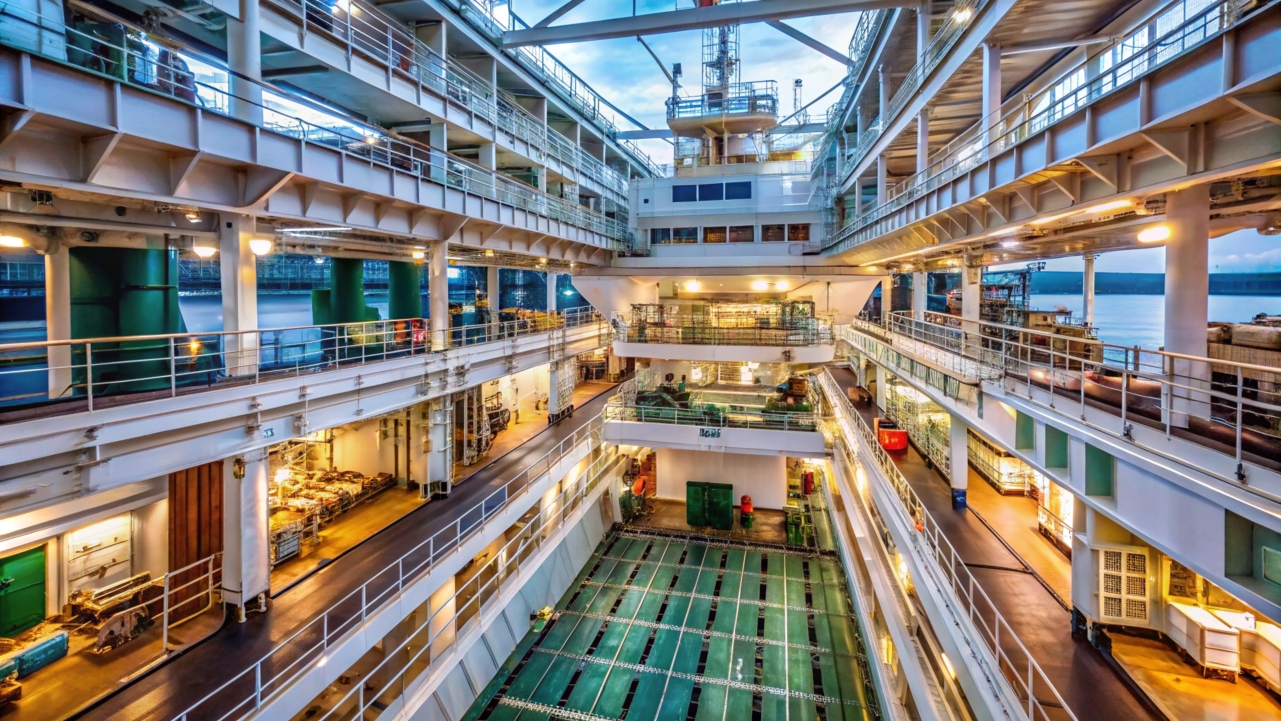When you think about the lowermost deck in a ship, you’re tapping into a foundational element that guarantees the vessel’s stability and functionality. This essential level operates as more than just a storage space; it’s a key component that influences the ship’s overall performance at sea. But what exactly goes into making this deck so important and how does it impact the ship’s operations? Stay tuned to uncover the intricate details that make the lowermost deck a significant part of maritime engineering.
Importance of the Lowermost Deck
Located beneath all other decks, the lowermost deck of a ship serves an important role in maintaining the vessel’s stability and structural integrity.
Ensuring cargo stability is one of the primary functions of this deck. By having the lowermost deck closer to the ship’s center of gravity, it helps distribute the weight of the cargo more evenly, preventing the ship from listing or capsizing.
Additionally, the hull integrity is closely tied to the lowermost deck. The deck provides critical support to the hull, especially in rough seas or during heavy cargo operations.
Without a sturdy lowermost deck, the hull could be compromised, leading to leaks, structural damages, or even catastrophic failures.
Fundamentally, the lowermost deck acts as the backbone of the ship, holding everything together and playing an essential role in the safe and efficient operation of the vessel.
Structural Features of the Lowermost Deck
The lowermost deck of a ship, known as the ‘bottom deck,’ features robust structural elements that are vital for maintaining the vessel’s stability and strength.
Regarding deck design, the lowermost deck is strategically positioned at the lowest point of the ship to guarantee a low center of gravity, enhancing stability in rough seas. This deck is typically constructed using heavy-duty materials such as steel to withstand the immense pressures exerted on it.
Structural integrity is paramount when considering the lowermost deck. Bulkheads and frames provide critical support, dividing the space and adding strength to the overall structure.
Longitudinal and transverse beams further reinforce the deck, distributing loads evenly and preventing sagging. Watertight compartments are integrated into the design to enhance safety and prevent flooding in case of a breach.
Utilization of Space on the Lowermost Deck
Positioned at the lowest point of the ship, the lowermost deck serves as an essential area for optimizing space utilization.
Efficient cargo storage is a primary function of this deck. Heavy items are strategically placed to guarantee stability and proper weight distribution. Large machinery and equipment are also carefully positioned on this deck to make the best use of available space.
The design and layout of the lowermost deck play a significant role in securing the vessel’s overall stability and performance, aligning with the critical considerations of ship hull design and characteristics from the Shipbuilding Process Designing A Ship.
Safety Considerations for the Lowermost Deck
Amid the intricate layout of a ship, the lowermost deck demands meticulous attention regarding safety considerations.
Fire safety is paramount on this level of the vessel. Adequate fire suppression systems, such as sprinklers and fire extinguishers, must be in place to swiftly address any potential fire hazards. Regular inspection and maintenance of these systems are vital to guarantee their efficacy in case of an emergency.
Evacuation routes on the lowermost deck must be clearly marked and easily accessible. In the event of an emergency, crew members and passengers need to be able to evacuate quickly and efficiently.
Regular drills and training sessions should be conducted to familiarize everyone on board with the evacuation procedures specific to the lowermost deck. Additionally, confirming that these routes are kept clear of any obstructions is essential to facilitate a smooth evacuation process.
Maintenance and Upkeep of the Lowermost Deck
Guaranteeing the proper maintenance and upkeep of the lowermost deck is vital to the overall safety and functionality of a ship.
Cleaning procedures for the lowermost deck involve regular washing with appropriate detergents to remove salt deposits, dirt, and other contaminants that can lead to corrosion. Pay particular attention to corners and hard-to-reach areas where debris tends to accumulate.
Inspect the deck for any signs of damage such as cracks, rust, or loose fittings. Repair techniques may include welding for metal surfaces, patching for minor damages, and replacement for severely compromised sections.
It’s imperative to address any issues promptly to prevent further deterioration and maintain structural integrity. Additionally, applying protective coatings after cleaning and repairs can help prolong the lifespan of the lowermost deck.
Frequently Asked Questions
How Is the Lowermost Deck Accessed During Emergencies?
During emergencies, accessing the lowermost deck is vital. Emergency protocols dictate using designated staircases, ramps, or alternative accessibility features. Familiarize yourself with the ship’s layout and practice emergency drills to guarantee swift and safe navigation.
Can Passengers Be Accommodated on the Lowermost Deck?
Passengers should not be accommodated on the lowermost deck due to limited passenger comfort and safety concerns. The deck layout typically houses machinery, storage, or ballast tanks, unsuitable for passenger occupancy during voyages.
Are There Specific Weight Restrictions for the Lowermost Deck?
To guarantee ideal weight distribution and maintain structural integrity, specific weight restrictions apply to the lowermost deck. Adhering to these limits is essential for safe navigation and stability of the vessel during its operations at sea.
Do Lowermost Decks Vary in Design on Different Types of Ships?
Lowermost decks on various ships differ in deck design to optimize ship stability. Understanding these differences is essential for maritime safety. Guarantee compliance with weight restrictions and proper layout to maintain stability at sea.
What Measures Are in Place to Prevent Flooding on the Lowermost Deck?
To prevent flooding on the lowermost deck, shipbuilders install watertight bulkheads, bilge pumps, and regularly conduct inspections. Effective flood prevention and water management systems are essential for maintaining the ship’s stability and safety at sea.






